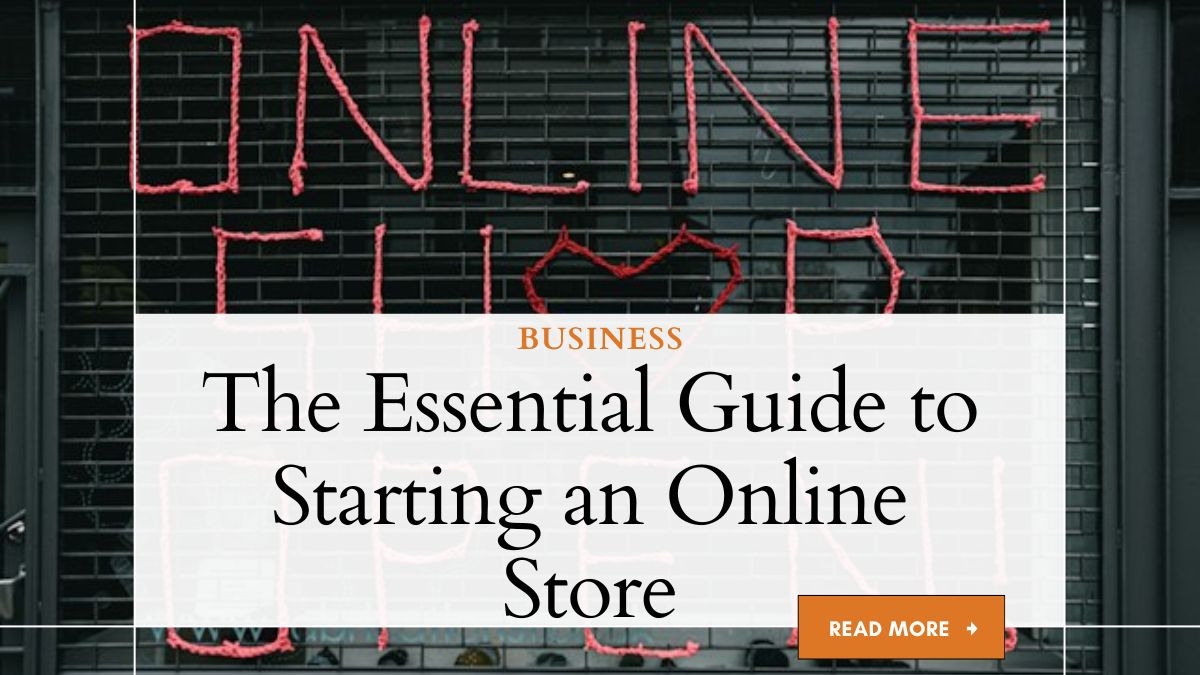
Are you thinking of starting an online store? It’s a great way to showcase your products, generate more sales, and even increase brand awareness.
But how do you start? With so many different tools and platforms available today, setting up an online store can be both intimidating and overwhelming.
If you want the best advice on setting up an online storefront that will help your business succeed, this guide is for you.
We’ll cover everything from choosing the right platform and creating a solid business plan to attracting customers and managing your inventory.
Also, you can able to know,
What Is E-commerce?
Before diving into the process of starting an online store, let’s first define what e-commerce is. Let’s face it: you probably asked yourself, “What is e-commerce and why is it important?” E-commerce, or electronic commerce, refers to the buying and selling of goods and services through the Internet.
With the rise of digital technology, e-commerce has become an integral part of our daily lives as it offers convenience, accessibility, and a wider reach for businesses.
Online stores eliminate the limitations of traditional brick-and-mortar stores, allowing businesses to sell products 24/7 without geographical barriers.
Thanks to the introduction of e-commerce, you can reach customers from all over the world and provide them with a seamless shopping experience.
Consider Your Business Model
When pondering your online store, the first step is to think about your business model.
A business model outlines how your business will create, deliver, and capture value. Here are some business models you want to consider.
B2C (Business to Consumer)
The B2C model involves selling products or services directly to consumers. This is the most common business model for online stores, where customers browse and purchase products from your website.
B2B (Business to Business)
In this model, businesses sell products or services to other businesses. For instance, a wholesaler sells goods to a retailer.
B2B e-commerce is growing rapidly and offers significant opportunities for businesses looking to target other companies as their customers.
C2C (Consumer to Consumer)
This model involves individuals selling products or services directly to other consumers through online marketplaces, such as eBay or Craigslist.
If you’re considering this model, make sure to research the fees and policies of the marketplace you choose.
Subscription-based
A subscription-based model involves customers paying a recurring fee for access to products or services.
This can include monthly or yearly subscription boxes, software subscriptions, or membership-based access to exclusive content.
Research Relevant Platforms
For your online store, you’ll need to choose the right platform that fits your business model and budget. Here are some popular options to consider:
E-commerce Platforms
E-commerce platforms like Shopify, WooCommerce, and BigCommerce offer all-in-one solutions for creating an online store.
These platforms include features such as website design templates, inventory management, payment gateways, and more.
Online Marketplaces
Online marketplaces, such as Amazon, Etsy, and eBay, allow businesses to sell their products directly on these platforms.
These can be great options for businesses looking for a larger audience and a built-in customer base.
Custom-built Website
If you have the budget and technical expertise, you may consider building your custom website.
This will give you more control over the design and functionality, but it also requires more time and resources.
Know that each platform has its pros and cons, so research each option carefully to determine which one is the best fit for your business.
Design Your Storefront
Your online store’s design is what attracts and retains customers. People want to shop on websites that are visually appealing, easy to navigate, and trustworthy.
Here are some tips for designing your storefront:
# Choose a clean and user-friendly layout that makes it easy for customers to browse and purchase products.
# Use high-quality product images to showcase your items. Include multiple photos from different angles, as well as close-ups of important details.
# Make sure your website is mobile-friendly as more and more people are shopping on their smartphones.
# Incorporate customer reviews and ratings to build trust with potential customers.
# Use a clear and consistent branding strategy, including your logo, colors, and messaging to create a cohesive look and feel.
With these tips in mind, you can create a professional and inviting storefront that will entice customers to explore your products.
Create Quality Product Descriptions
A poorly written product description can deter customers away from the product while a well-crafted one can persuade them to hit the “Add to Cart” button without hesitation.
Creating quality product descriptions is a must for every business that wants to succeed in the digital marketplace.
To do so, businesses should ensure that their product descriptions are accurate, helpful, engaging, and — most importantly — SEO-friendly.
Your descriptions should also highlight the unique features and benefits of your products, as well as answer any potential questions or concerns customers may have.
Set Up Payment Processing
Setting up a secure and user-friendly payment processing system is arguably the most important step in building a successful online store.
By offering a variety of payment options, such as credit cards, debit cards, PayPal, and Apple Pay, you cater to the diverse preferences of your customers and make it easier for them to complete their purchases.
Most e-commerce platforms offer integrated payment gateways that ensure safe and convenient transactions.
However, you must ensure that these gateways are PCI-compliant to protect your customers’ sensitive information.
Even consider offering guest checkout options to enhance user convenience. As shopping cart abandonment rates are high in the e-commerce industry, you want to make the checkout process as quick and seamless as possible.
Market Your Store
Once you have your online store set up, it’s time to attract customers. Here are some effective ways to market your store and generate more sales:
# Use social media platforms like Facebook, Instagram, and Pinterest to showcase your products and engage with potential customers.
# Collaborate with influencers or bloggers in your industry to reach a wider audience.
# Utilize email marketing campaigns to keep customers informed about new products, sales, and promotions.
# Invest in search engine optimization (SEO) to improve your website’s visibility on search engines like Google.
# Consider running online ads through platforms like Google AdWords or Facebook Ads to target specific demographics.
By utilizing these marketing strategies, you can increase brand awareness, attract more traffic to your store, and ultimately drive sales.
Don’t miss: The Best Businesses to Become a Millionaire
The bottom line
Starting an online store can be a rewarding endeavor, offering vast opportunities for growth and success.
While the process may seem daunting, this guide has hopefully provided you with a foundation and understanding of what it takes to get your online store off the ground.
The journey of e-commerce is a learning experience: you only need to be patient, persistent, and dedicated to your vision.
It won’t happen overnight, but with careful planning, hard work, and a customer-centric approach, you can build an online store that thrives.










